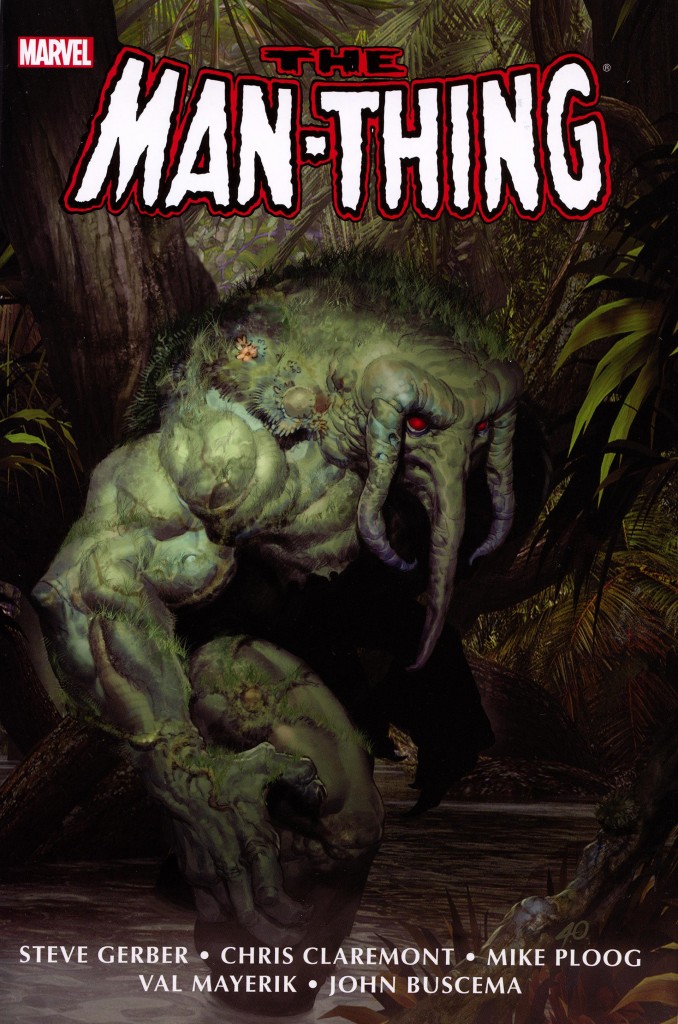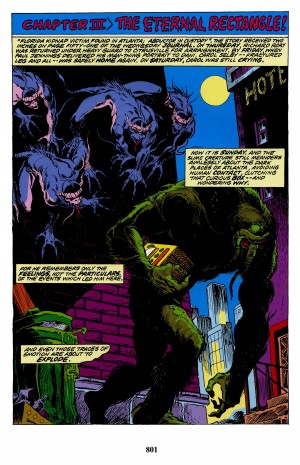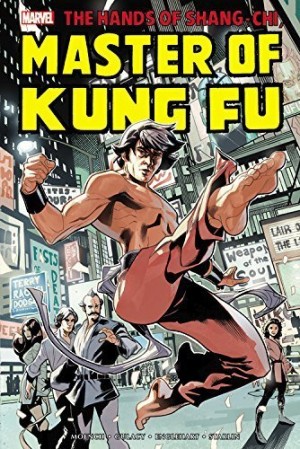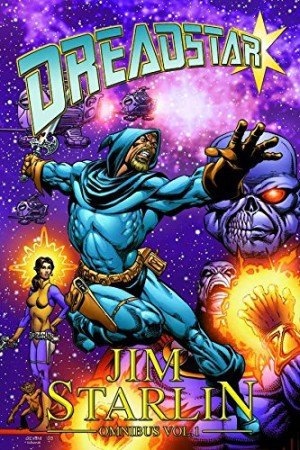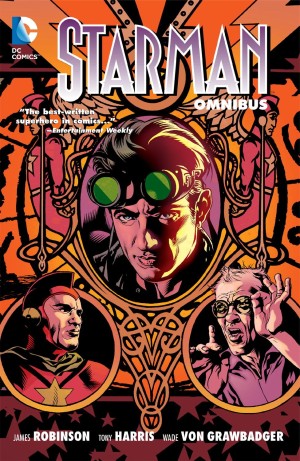Review by Ian Keogh
In one of those odd coincidences life occasionally throws up, in 1971 Man-Thing débuted at Marvel the same month DC first published Swamp Thing, both companies simultaneously reviving the swamp monster genre previously dead for almost thirty years. It was the meticulously drawn gothic horror of Swamp Thing that drew all the plaudits at the time (and would again), but Man-Thing proved longer lasting, and this massive collection encompasses his first decade.
It’s nicely drawn by Gray Morrow, but there’s nothing to suggest from Man-Thing’s over-written opening adventure that here was a character with potential. It reads as designed, eleven filler pages for an anthology in which the formula Ted Sallis was developing for the benefit of mankind instead transformed him into a shambling monster. It was later established this monster had an empathic pull toward fear, and those who feared him burned at his touch.
His early appearances shamble much as he did, and it took Steve Gerber’s appointment as writer to make something of the character. Gerber’s lengthy run has been issued in two paperbacks, and more detailed reviews can be found starting here. Gerber took a character lacking in purpose and personality and surrounded it with largely fleeting cast members whose lives provided the drama while Man-Thing was generally, and always unwittingly, the essential instrument. This was often of retribution, but Gerber’s clever enough not over-play that element, and using this formula he created some remarkable stories spanning genres. Artistically Mike Ploog’s lumpy characters are excellent, John Buscema polished, but less individual, and Val Mayerik hot and cold. Whoever considered former Supergirl artist Jim Mooney (sample art) was an ideal match for Gerber’s fertile mind must have been nuts, but his very ordinary layouts ground the strip in an effective reality. Not everything works, and Gerber’s responsible for some self-indulgent rubbish, but there are more hits than misses and a handful of really great stories still noteworthy today. There’s also a later coda, another musing on stifling creativity, that’s very good.
Four years of guest appearances in other titles follow. A meeting with the Hulk by Len Wein and Sal Buscema is fun, a teaming with Captain America and the Thing less so. In 1979 a revived Man-Thing title was launched, with Mooney back and Michael Fleisher now writing. On paper this was an inspired choice, as Fleisher distinguished himself at DC writing morbid morality plays for the Spectre and Jonah Hex among others, but his three issues recycle ideas from Gerber amid dull plots. Chris Claremont earlier provides a decent one-shot teaming Man-Thing with Spider-Man, nicely drawn by John Byrne, but given the regular series uses Gerber’s template, but lacks his facility for imbuing the utterly left field. Furthermore Man-Thing is almost incidental to most of Claremont’s contributions. His plots provide spectacle, but the lacklustre art of Don Perlin renders even a flying ship packed with pirates dull. Nor can Perlin manage basics such as keeping the trees around a crashed plane consistent from panel to panel, and it’s damning when his art is considerably bettered by Larry Hama’s fill-in. Claremont’s finale closes the book, echoing Gerber’s last tale, but so much was set in motion the result is a confusing mess. A shame, as the introduction of Jon Kowalski had enlivened Claremont’s work.
Is this worth buying? Not for anyone who isn’t unusually touched by Man-Thing. The best art illustrates mundane plots, and Gerber’s strengths are best appreciated via the cheaper collections dedicated to his work.
